The US Air Quality Index (AQI) is a numbered scale used by the Environmental Protection Agency (EPA) to report air quality conditions across the country. The AQI serves as a metric for determining whether the absolute air quality in an area is safe or dangerous for residents.
Scores range from 0-500. In general, any score of 50 or below is good, and scores of 300 or over are dangerous. This is usually because they indicate an unsafe presence of various pollutant chemicals such as ground-level ozone, particle pollution, carbon monoxide, sulfur dioxide, or nitrogen dioxide.
The AQI forecasts daily, minute-by-minute information about the air quality of various states. It also provides reports on how cities tend to look throughout the year. Air quality in a city or state is never entirely consistent all the time. It varies from day to day or even hour to hour depending on the time of year, the geography of the area, climate change, natural disasters, and various other factors.
The following five city capitals consistently rank among the worst in terms of absolute air quality nationally. Absolute air quality looks at how one can expect the air quality to look in a general sense, even if some days get good or moderate scores.
Some of these cities may have good air quality right now, and some are not even the most polluted in their state. However, they still struggle to meet many national standards for air quality. Let’s take a look at the five most polluted capitals in the nation, why they have such poor quality, and what may be being done about it.
The cities are listed in no particular order.
1. Salt Lake City, Utah
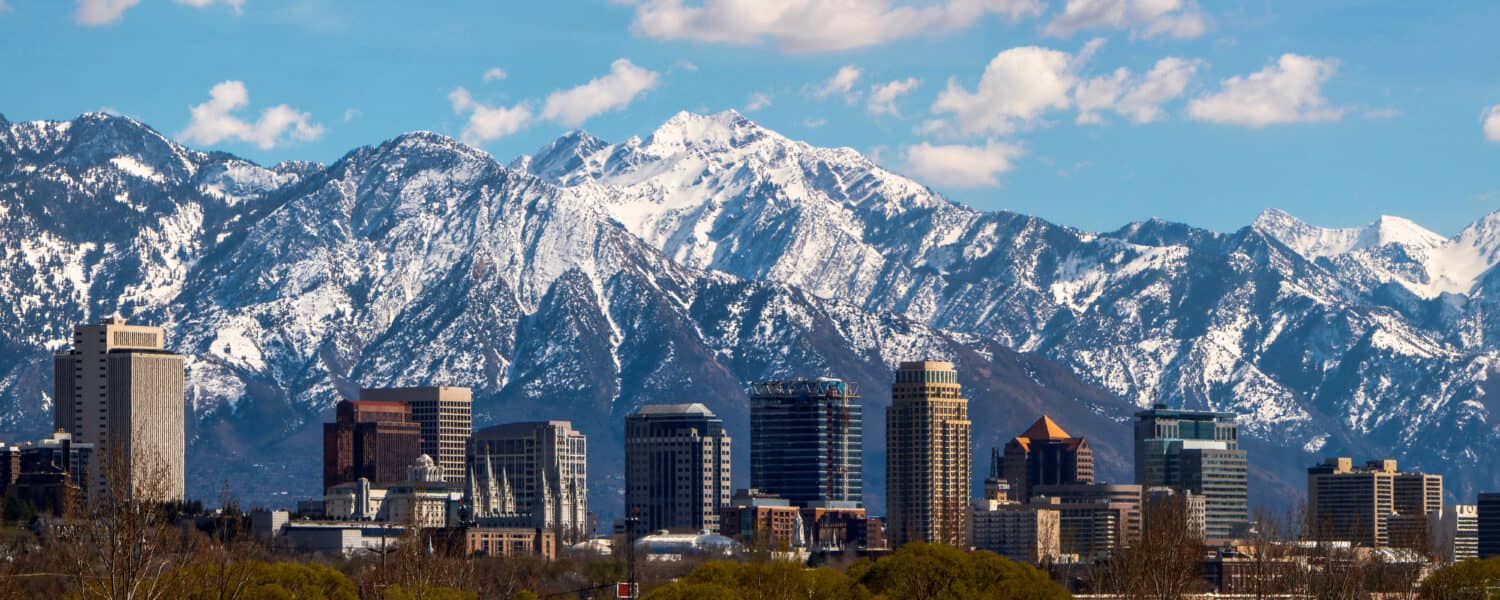
Salt Lake City sits at the basin of several mountain ranges.
©Joe Guetzloff/Shutterstock.com
The capital city of Utah is among the most polluted cities in the United States. Despite recent anti-emission efforts, Salt Lake City has never once reached federal levels for ozone or 24-hour PM2.5 pollution.
The AQI is a threshold for cities across the nation to determine “healthy” levels of ozone, PM2.5, and other air pollutants.
The current national standard for a 24-hour period of PM2.5 is about 35 micrograms per cubic meter of air (µg/m3). Salt Lake City ranked 7th out of 217 metropolitan areas for worst 24-hour PM2.5 pollution and 11th out of 228 metros for worst ozone pollution in the 2019 State of the Air report from the American Lung Association (ALA) for exceeding this threshold.
While it is faring better this year, it is still far behind in terms of meeting several federal averages.
Salt Lake City experienced a weighted average of 25.7 days of unhealthy ozone and 11.5 days of unhealthy PM2.5 levels between 2016 and 2018. This is at least eight times more than the targeted federal average of 3.2 days a year.
Temperature inversions during the winter, which trap polluted air, are partially to blame for these issues. The city also lies at the basin of the Wasatch, Oquirrh, and Traverse Mountains. These exacerbate this trapping effect by literally shielding the city from strong winds that would otherwise help clear out the inversions.
While the government of Utah has made promises to advance the city’s renewable energy initiatives and push for greener transportation and greener homes, the progress is likely to be very steady.
2. Phoenix, Arizona
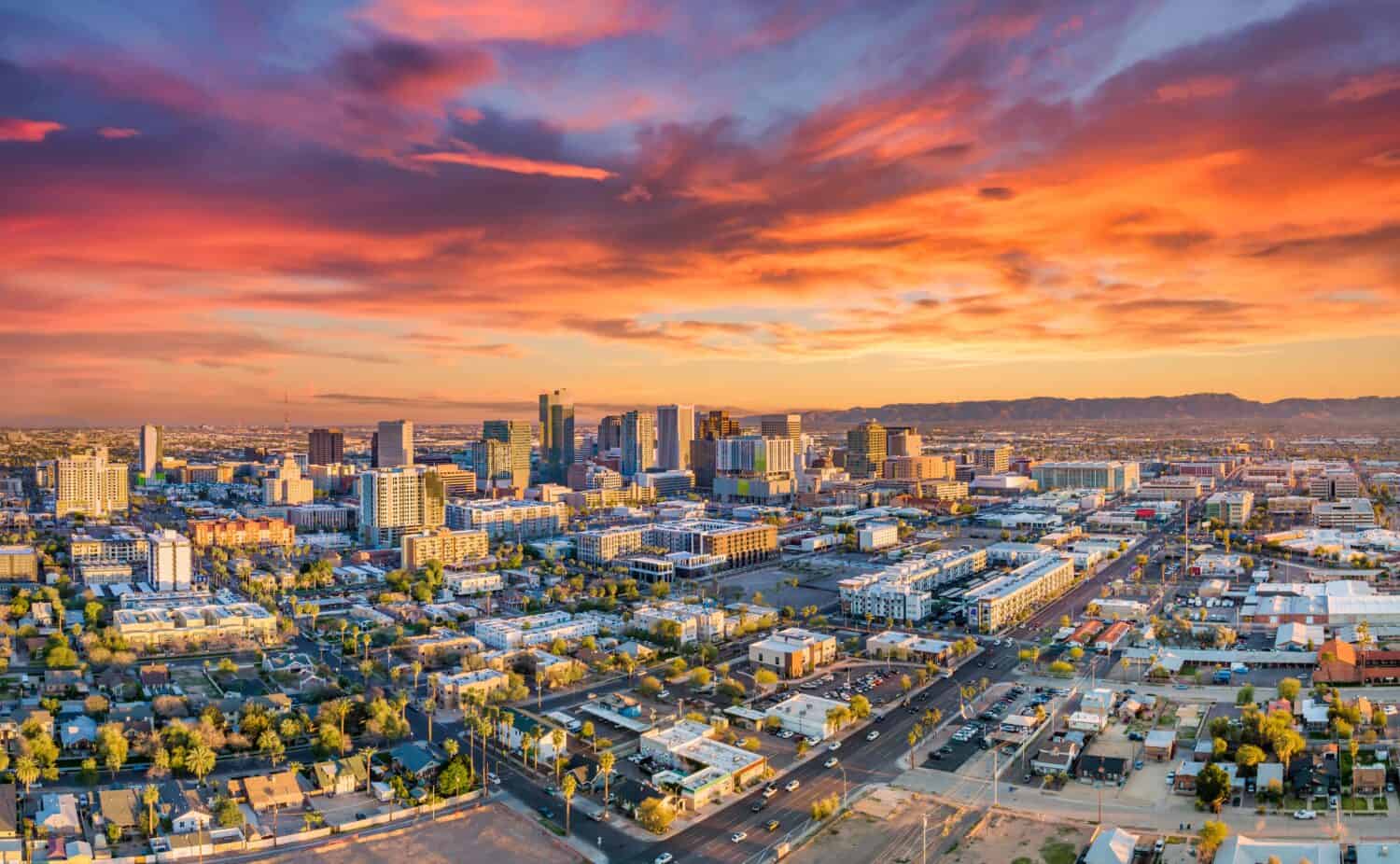
The often dry and arid weather around Phoenix tends to promote the formation of ozone in the city.
©Kevin Ruck/Shutterstock.com
Phoenix is the capital city of Arizona, as well as its most populous city with over 4.7 million people and counting. Being such a large city, the quality of the air is very important to accommodate the diverse health needs of its residents.
Phoenix enjoyed a brief period of “Good” air quality throughout 2021, meeting various World Health Organization (WHO) standards for PM2.5, PM10, and ozone. However, the latter substance is consistently a thorn in the city’s side.
The city has a history of experiencing a high number of unhealthy ozone and PM2.5 days. From 2016 to 2018, it averaged about 46.5 days of unhealthy air primarily due to ozone. This is a pollutant formed from a reaction between nitrogen oxides and organic substances, often under great heat.
Ozone is one of the most potent and difficult-to-control pollutants in the US because it is formed naturally in the atmosphere. You may be familiar with the ozone layer, which protects the planet from UV rays.
However, while this makes the gas beneficial to the planet, it can be harmful when exposed to it in large amounts. When inhaled, it aggressively reacts to lung tissue. This can cause breathing problems, violent coughing, chest pain, and shortness of breath. It can also lead to lung cancer, lung damage, and early death.
Being in a state that is generally very arid, dry, and hot, Phoenix gets an abundant amount of sunlight and heat. Although colder winter months result in temperature inversions that trap pollutants closer to the city, this is the case for many cities besides Phoenix. For Phoenix itself, ozone is often the most to blame for the city’s low air quality rankings.
Phoenix had an “F” and ranked 7th among 228 included metropolitan areas for high ozone days in 2022. It jumped to 5th place this year. The city has made plans to have good air quality days at least 90% of the year by 2050.
3. Denver, Colorado
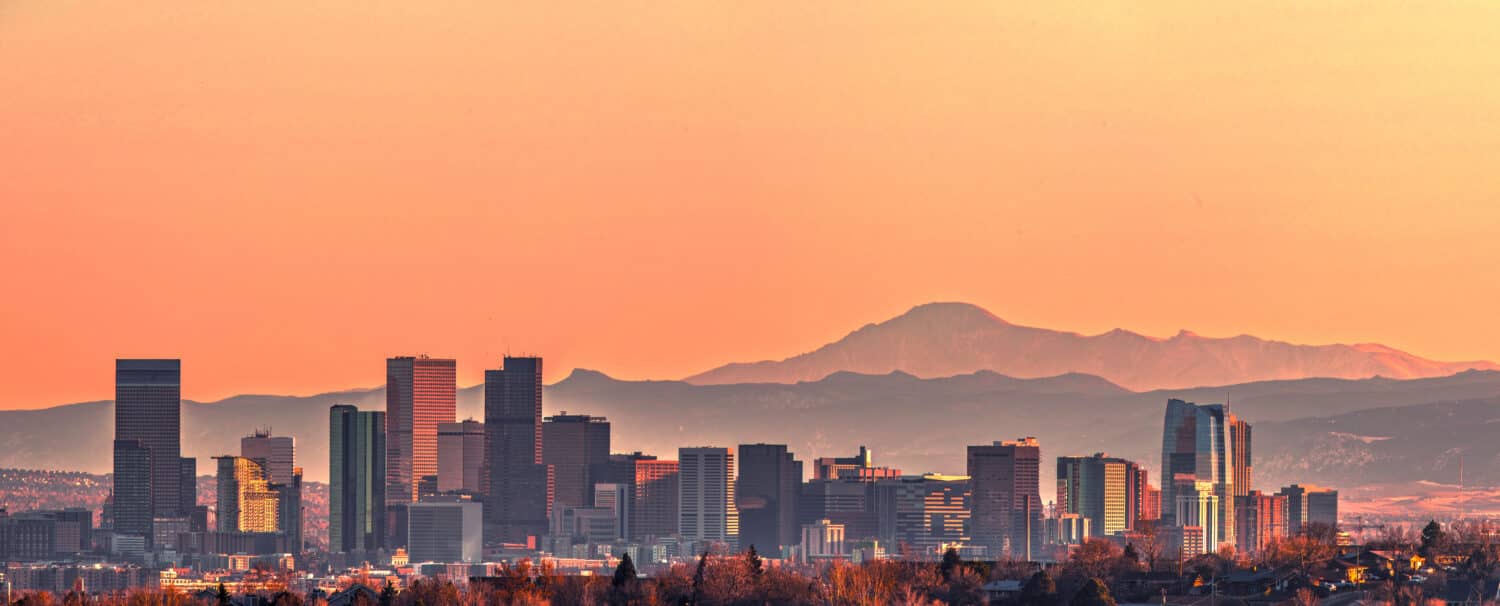
Denver experiences an average of 13.7 high ozone days per year, far above federal standards.
©egvisuals/Shutterstock.com
The capital of the state of Colorado, Denver, is one of the most populous cities in the United States. Although it is not the most polluted city in Colorado, it is still perhaps one of the most polluted in the country.
Thanks to high transportation emissions and the sizable presence of the oil and gas industry, Denver struggles to meet federal standards for ozone and PM2.5.
Denver currently has an “F” rating from the ALA for having too many 24-hour periods of excessive ozone and PM2.5, with a rated average of 13.7 and 7.8, respectively.
In the 2023 State of the Air report, this makes the city rank 6th and 18th nationally in both categories. Although it did experience a period of “Moderate” air quality around the beginning of 2021, it does not have the best track record for frequently meeting this level of steady air quality.
Residents of Denver breathed air exceeding government standards for more than 260 days from 2018 to 2019. Additionally, data from previous years shows that overall air quality in Denver has been slightly declining since 2017. It was 7.4 µg/m³ in that year, 8 µg/m³ in 2018, 8.2 µg/m³ in 2019, and 8.7 µg/m³ in 2020. 2020 was an especially bad year for Denver due to the unforeseen rise of wildfires across the state. This led to some of the highest levels of PM2.5 in the last decade.
The city is making progress toward alleviating its absolute air quality issues. It passed a new electric vehicle plan in April 2020. There are also ongoing projects to expand public transportation and cycle lanes to reduce mobile emissions.
4. Sacramento, California
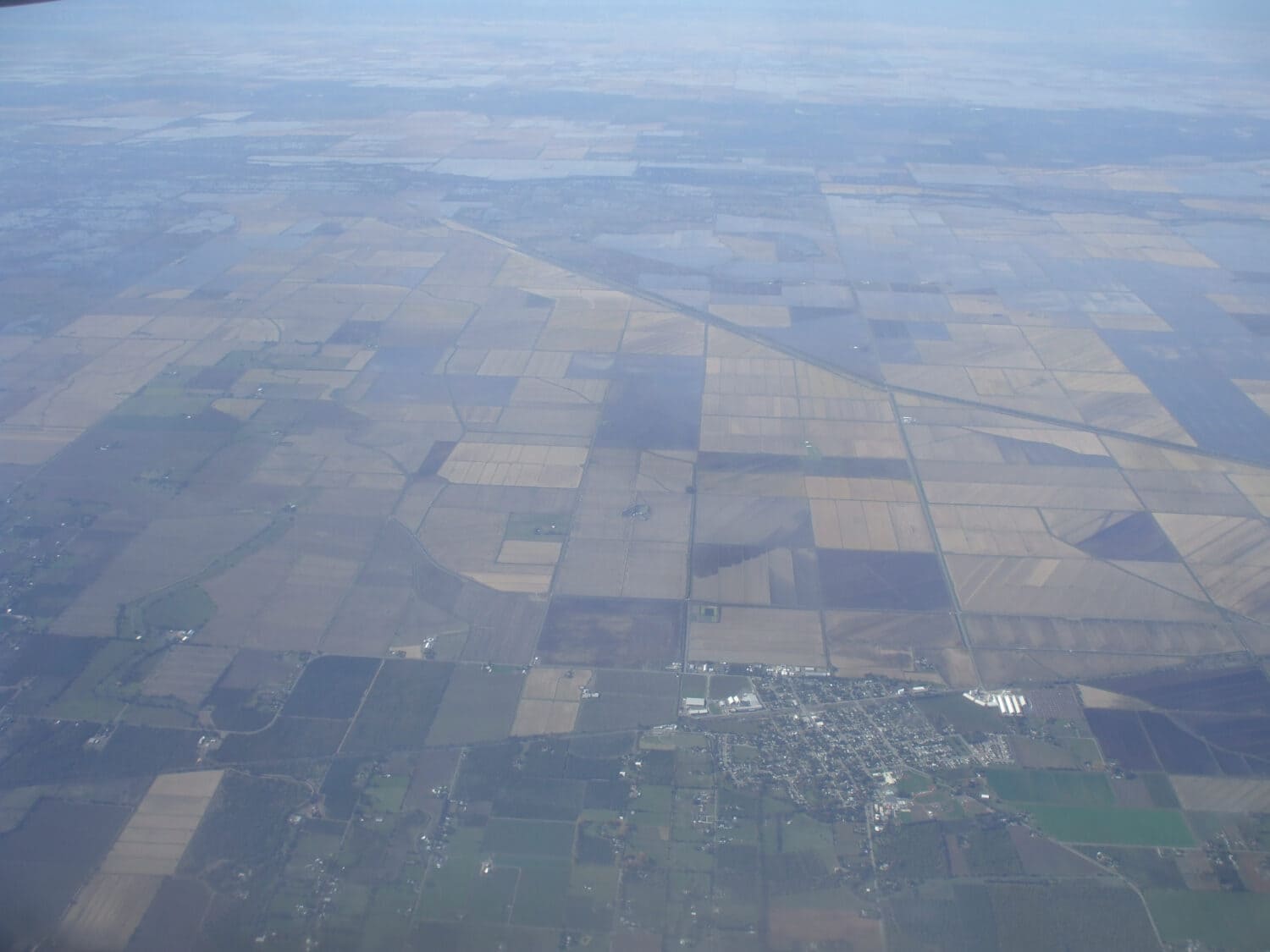
Wildfires and several environmental factors have often stalled Sacramento’s air quality efforts.
©ADNER/Shutterstock.com
The city of Sacramento is perhaps one of the most polluted cities in the state of California.
In recent years, elevated air pollution in Sacramento has been mostly attributed to the frequency of wildfires in California. This was especially true during 2019. Examples include the Tehama County Ranch fire that burned more than 2,500 acres and the Sonoma County Kincade fire in Sonoma County that burned over 77,000.
Wildfires are far from the only things that contribute to the city’s poor air quality. However, their unpredictability makes them very difficult to fully circumvent.
In general, transportation exhaust serves as the most significant source of air pollution in Sacramento. The high daily transportation emissions in Sacramento are exacerbated further by the general climate of Sacramento Valley.
Temperature inversions trap polluted air, high heat and sunshine promote the formation of ozone, and tall surrounding mountains block winds. These are just some of the factors that contribute to the relative frequency of high-pollution days in Sacramento.
In fact, Sacramento ranked as the fifth most ozone-polluted city according to the 2019 State of the Air report released by the ALA, out of 228 metropolitan areas.
Sacramento also averaged about 11.3 unhealthy PM2.5 days between 2016 and 2018. The weighted average now is about 18.7.
The establishment of the Clean Air Act and other recent legislation has drastically improved air quality across California. According to year-to-year data, Sacramento’s air quality rose 27.8% from 2017 to 2018. However, it fell 40.8% from 2018 to 2019 thanks to the unusually severe wildfire season. So, while the city is making progress toward cleaner absolute air quality, said progress is likely going to remain slow and steady for some time.
5. Indianapolis, Indiana
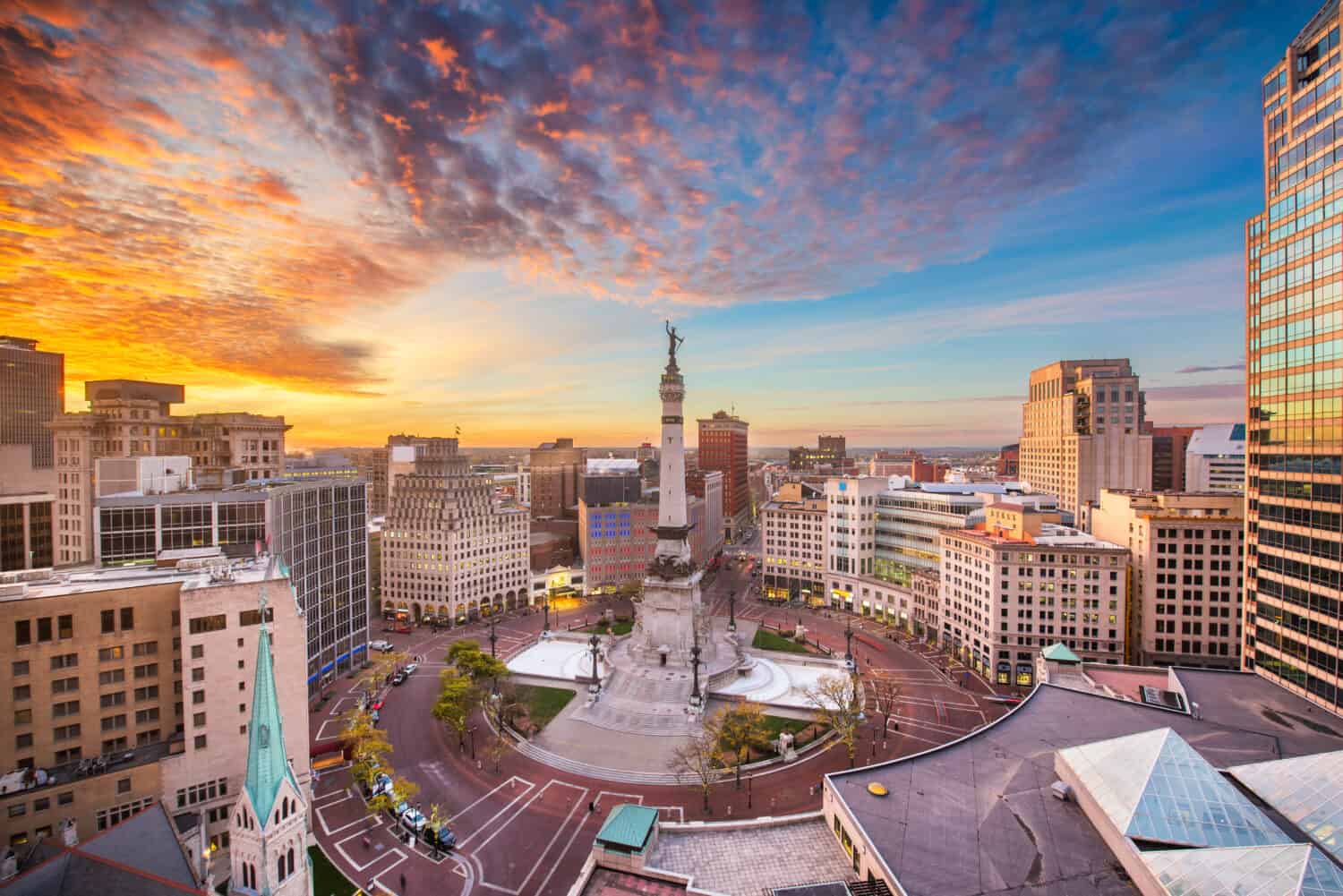
The city of Indianapolis often warns residents of ozone action days.
©Sean Pavone/Shutterstock.com
The capital city of Indiana is also one of the most polluted in the state. It has only recently begun to fall short of multiple EPA standards for pollutants like PM2.5 and ozone. However, its absolute air quality measurements are still among some of the worst in the state.
Ozone levels in Indianapolis have been on the rise since about 2015, and higher levels of PM2.5 started springing up around 2019. Vehicular emissions, industrial processes, and wildfires are the main contributors to this. They lead to higher levels of nitrogen dioxide (NO2) and volatile organic compounds (VOCs).
These two pollutants are necessary for the formation of ozone. Indianapolis houses nearly 7,400 oil and gas sites that release over 370 tons of hazardous air pollution annually.
As a result, Indianapolis now sees an average of 6 annual “unhealthy” ozone days as of 2020, landing an “F” rating from the ALA. It also experienced about 7 “orange” days and 1 “red” day for particle pollution in that year.
Indianapolis was second with a PM2.5 concentration and year-round particle pollution in the state that year because of this. As of right now, it sits in 10th place.
The Indiana Department of Environmental Management now forewarns the public of potential ozone action days. These are hot, sunny days that are expected to produce unhealthy levels of ozone.
On an ozone action day, ozone levels are expected to reach or exceed an AQI above 100. A range of 101 to 150 is called “orange”. This is risky for sensitive groups, such as children, the elderly, and those with heart or lung disease. Any measure between 151 to 200, is “red,” indicating it is unhealthy for the general populace. Anything from 200 to 300 will negatively impact all animals in the area, and anything 301+ is cause for evacuation.
Summary of the U.S. Capitals with the Worst Air Quality
| Location | Current Air Quality Index (AQI) Score |
|---|---|
| Salt Lake City, Utah | 28 |
| Phoenix, Arizona | 33 |
| Denver, Colorado | 0 |
| Sacramento, California | 24 |
| Indianapolis, Indiana | 16 |
Thank you for reading! Have some feedback for us? Contact the AZ Animals editorial team.








